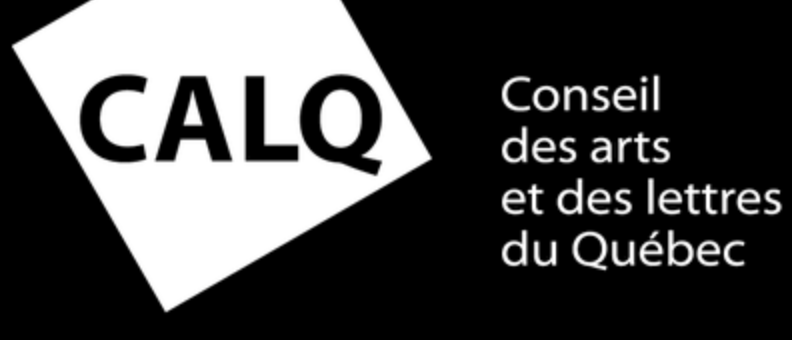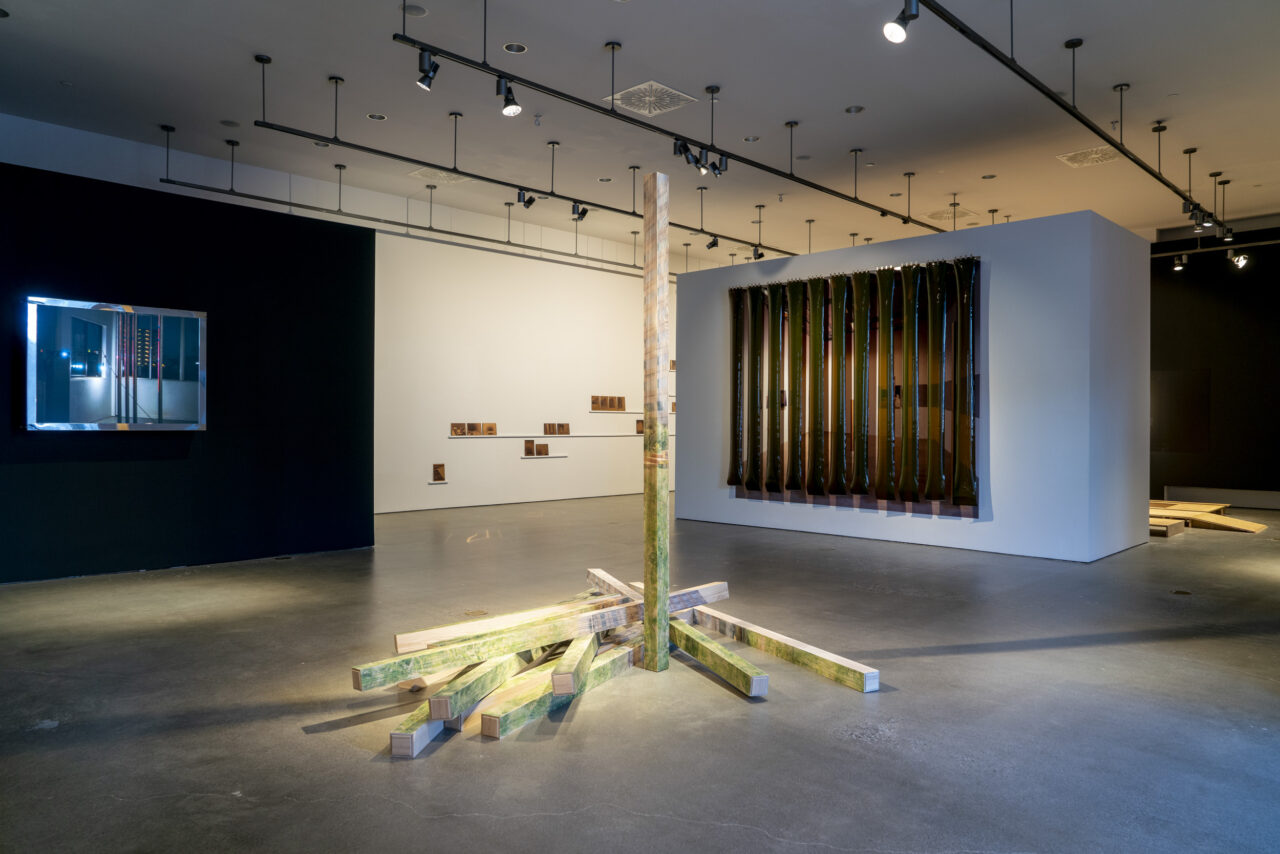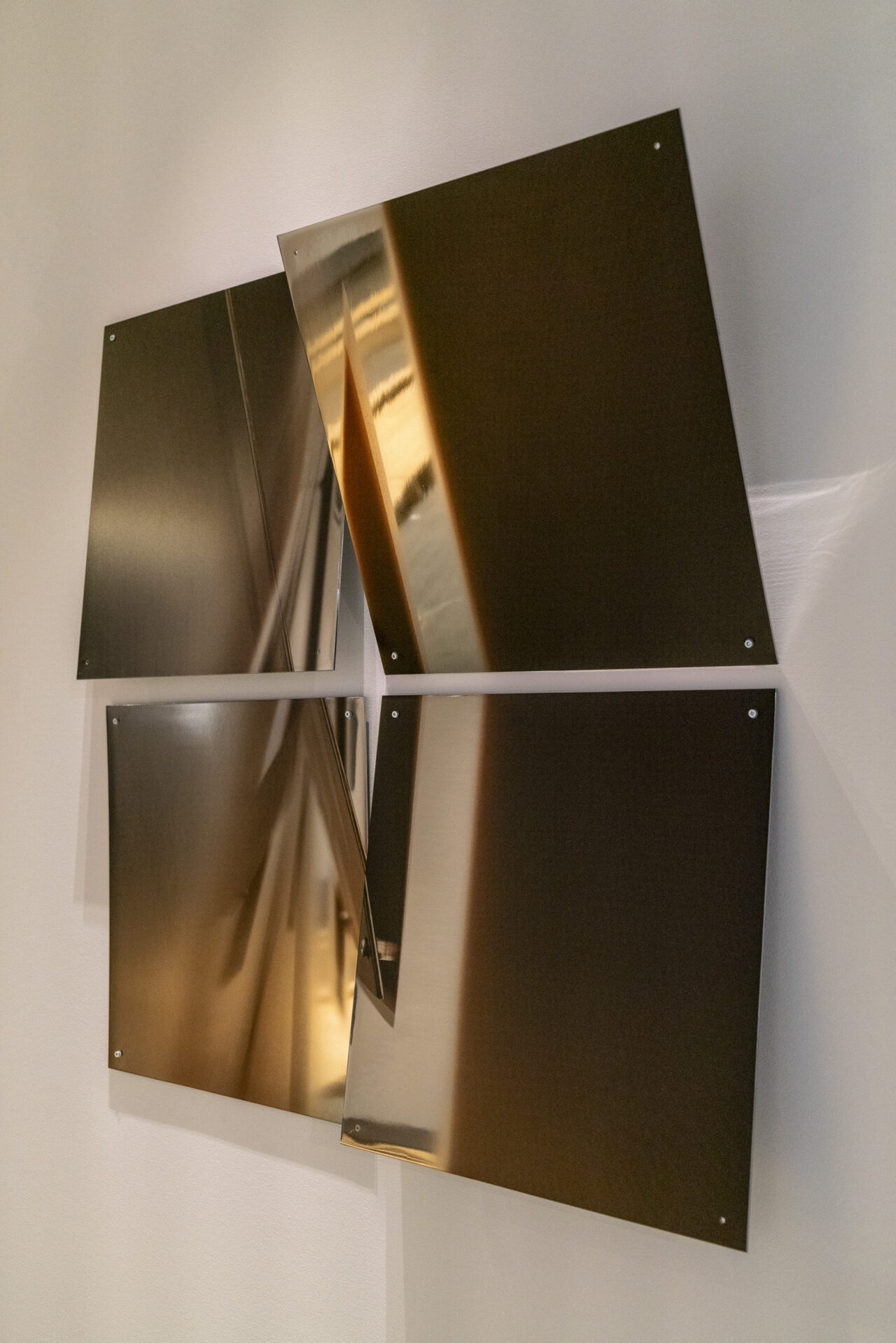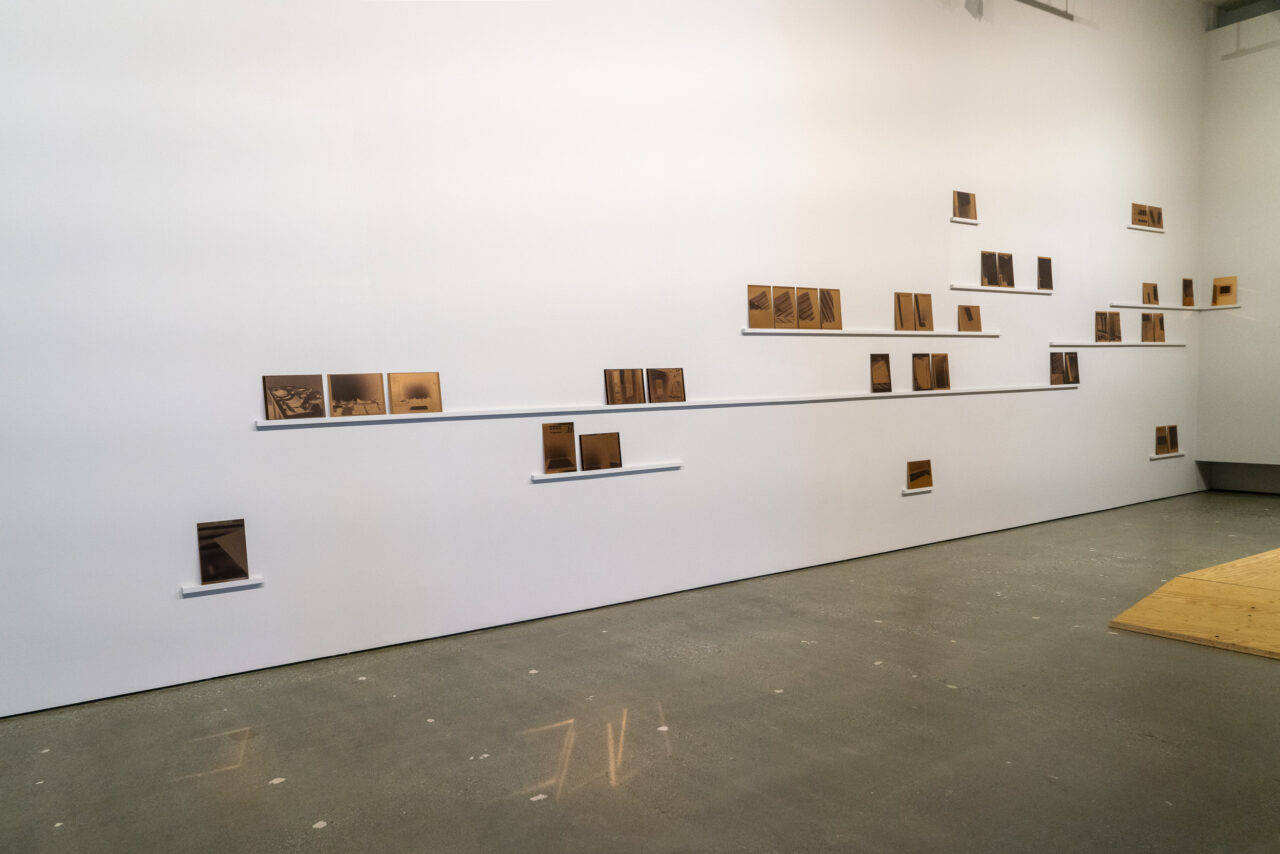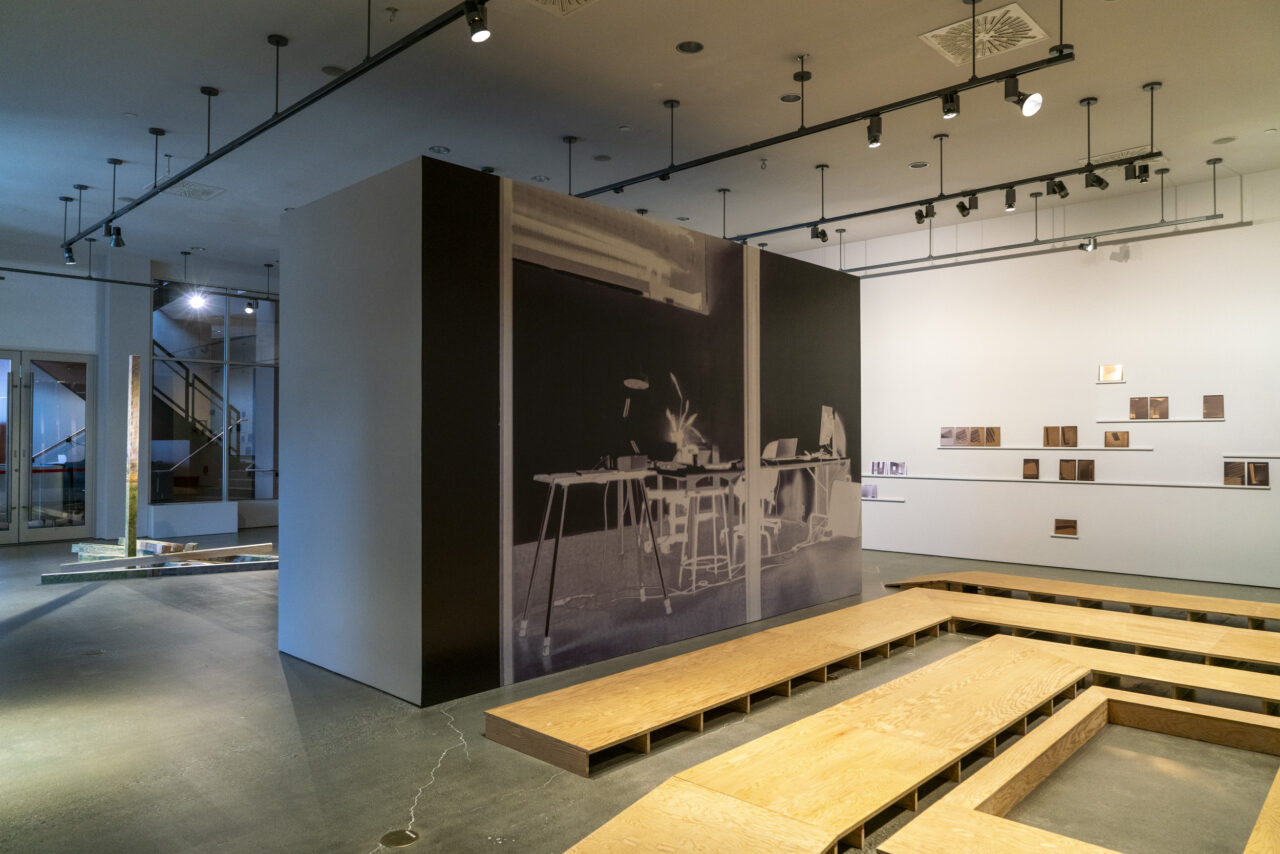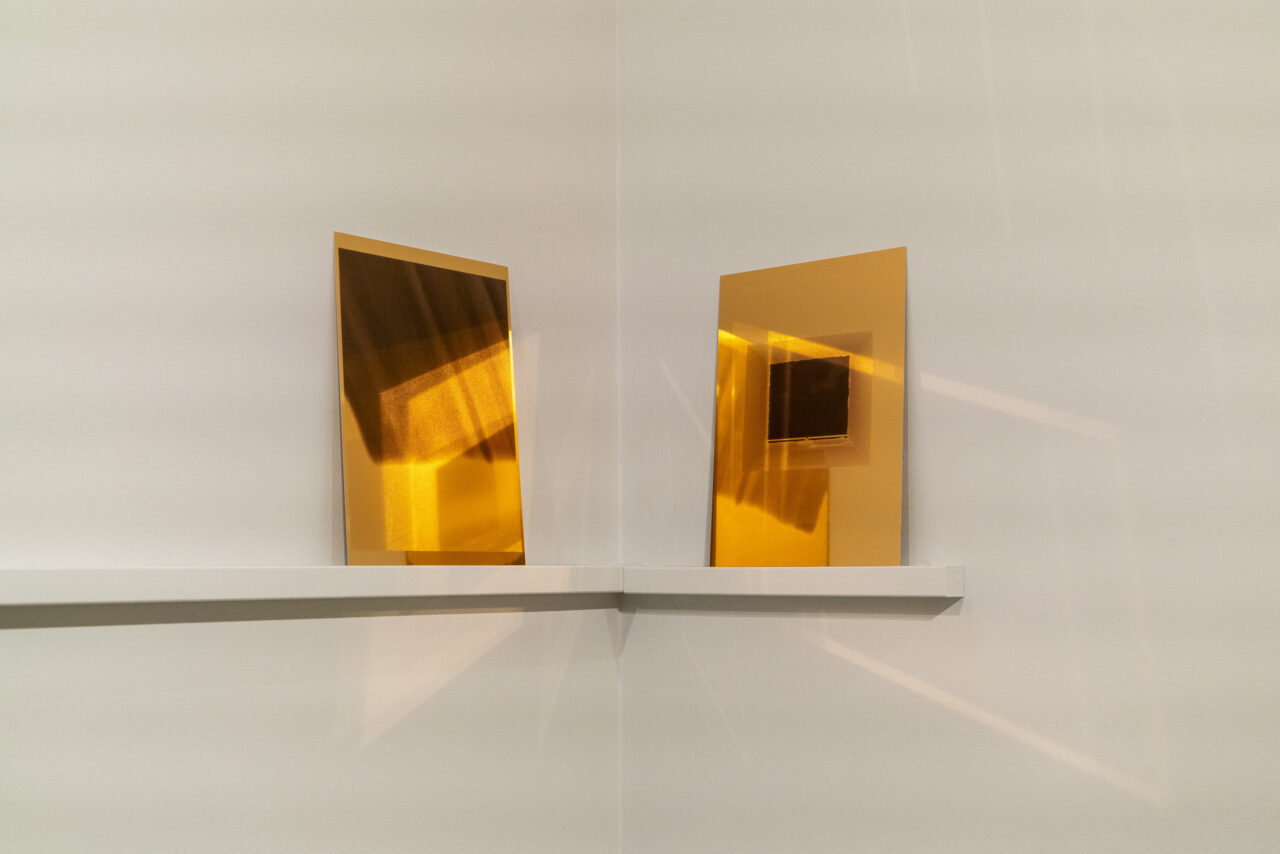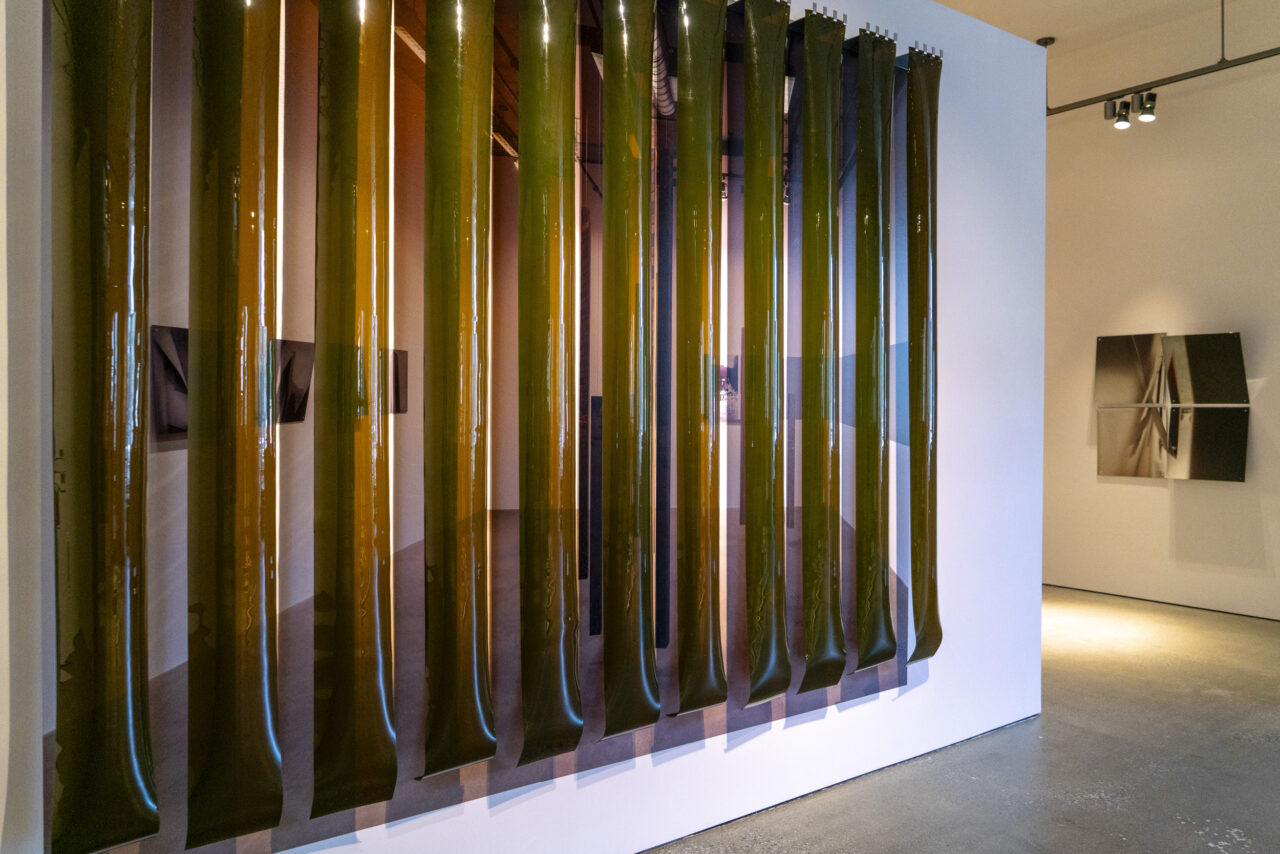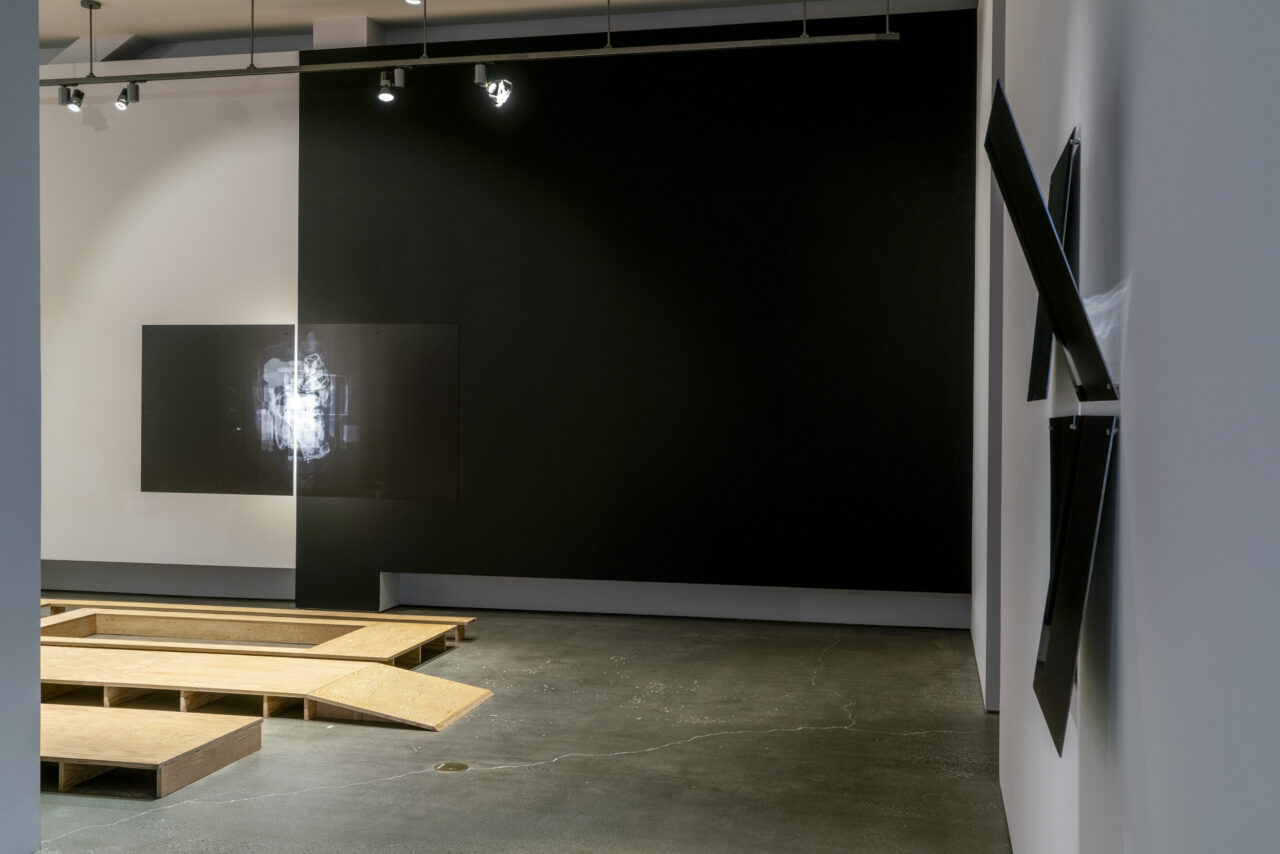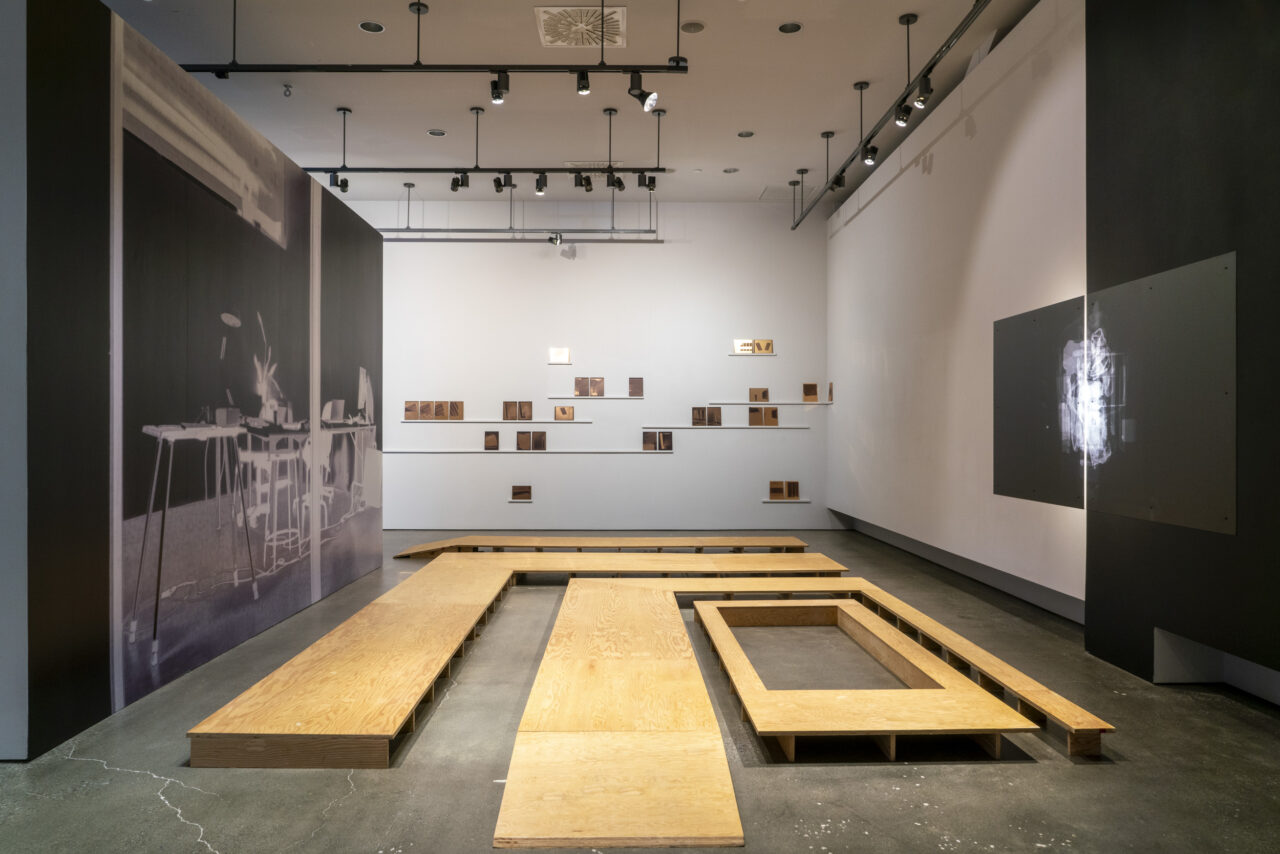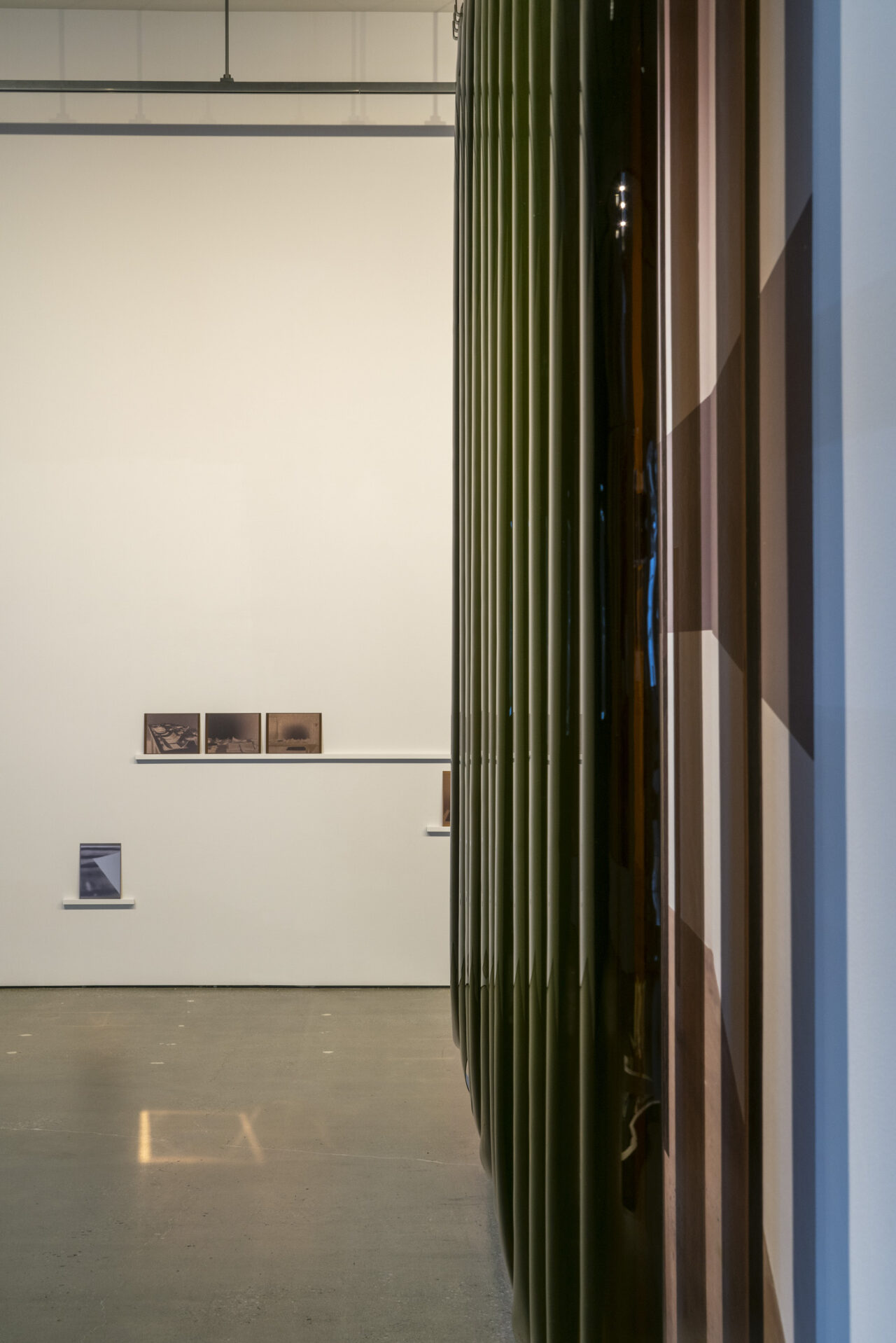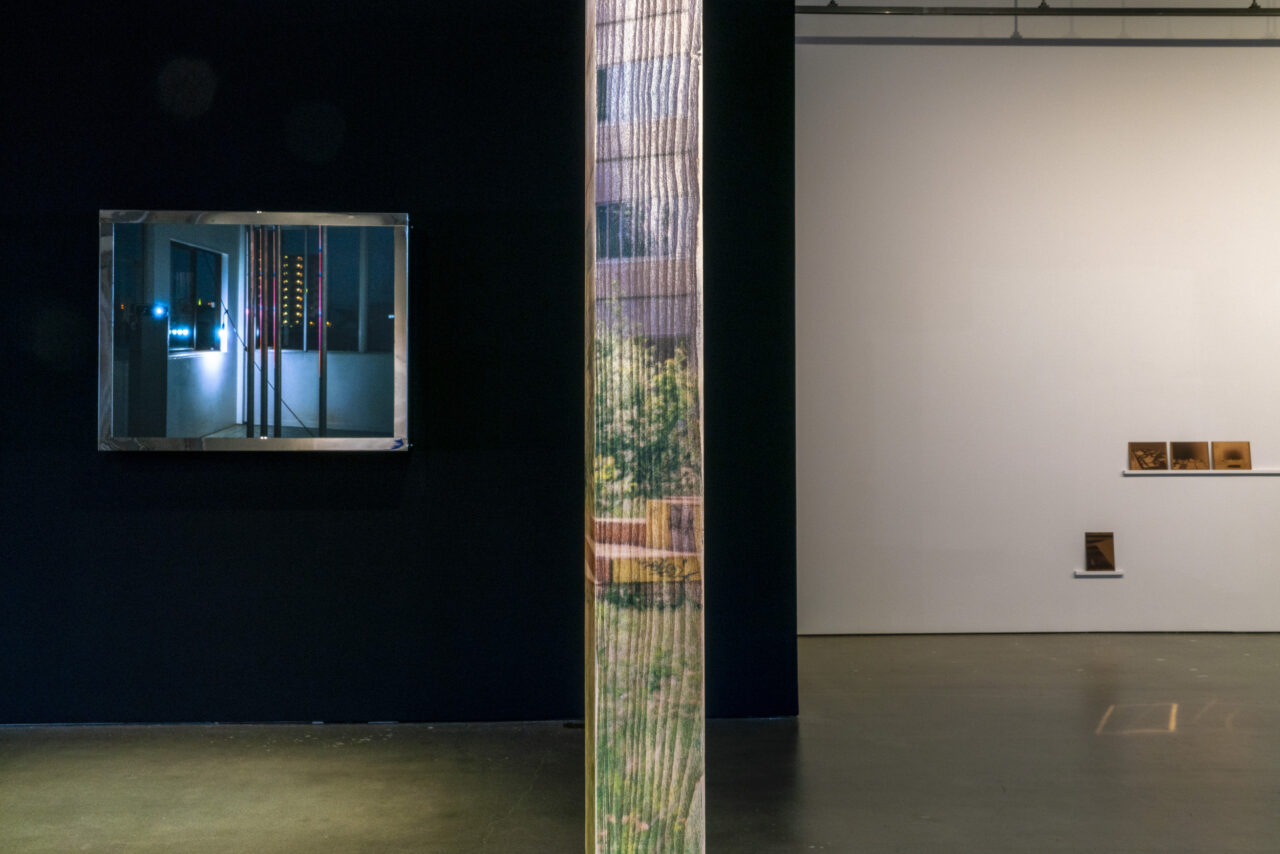How do we situate ourselves in a place that stands in for others?
Where do we find our place when we’re immersed in a constellation of images and objects reflecting various trajectories taken in, around, and over different spaces, which are inhabited temporarily or over a long period of time?
What spatial and temporal scales do we use to measure the transformations occurring in our immediate environment? How do we grasp the impact of our individual and collect- ive actions on our living environments?
***
In the solo exhibition En places et lieux, Lucie Rocher creates intersections between various worksites: architectural, urban, social, economic, cultural, artistic. Instead of drawing our attention to the outcomes of their transformations, which, as the works evoke, are never final, the artist focuses on the processes that generate them. The worksite, a leitmotif in Rocher’s work, becomes a still moment in time. A point of comparison showing the contrast between before and after, it allows us to see “one side and the other”. De part et d’autre was in fact the title of a previous exhibition at Centre CLARK in Montréal, traces of which can be found in the gallery at DRAC.
As workspace and research subject for Rocher, the studio is now a site in which her artistic trajectory intersects with collective stories of the neighbourhood where it has evolved, stories marked by struggle and resistance. Over a decade ago, the artist set up her studio in Mile End, in the Plateau-Mont-Royal borough, at 5445 Avenue De Gaspé: this building and the one at 5455 form a creation and dissemination hub of visual and media arts. In the gallery, Rocher’s career path is evoked through wood platforms representing the increasing dimensions of various studios she has had in the building over the years. The artist thus examines the complex architectural and socioeconomic mutations of the building, which initially housed textile and garment factories and today is a workspace for artists and professionals in creative industries.
The changes that the neighbourhood and its buildings have undergone, and as a result, the people who work and live there, are reflected in the transformations of the exterior spaces, in terms of both their use and their meaning. In the late 1980s, as industrial activity diminished in the area, the terrain to the north of the Pôle De Gaspé was left fallow by Canadian Pacific Limited, which had had a rail yard there. Henceforth known as the Champ des possibles, this plot of land was subject to an important mobilization: the City of Montréal acquired the land and placed it under the management of a citizens’ committee interested in conserving its “wild” state. At CLARK, Rocher presented detailed photographic fragments of the Champ des possibles landscape, printed on thin beams sus- pended from the ceiling. At DRAC, the artist erases this landscape, allowing it to collapse and disappear, as though falling into a state of entropy.
By deconstructing the urban dynamics whose effects she has observed on a daily basis, Rocher opens up a critical space-time. Does she wish to prevent this recent history from being forgotten? Does she maintain that this development may have a cyclical nature and, as with any cycle, be characterized by loss that leaves room for renewal?
By reinterpreting the work presented at CLARK, the artist emphasizes the temporary aspect and precarity of the present moment.
From CLARK to DRAC, the exhibition De part et d’autre is discernable to a knowledgeable eye. Some works are subject to new incarnations, while others are documented in various ways. An industrial curtain, similar to ones that used to hang in the de Gaspé buildings, creates a recursive effect, this time by concealing a view of the Montréal exhibition. Elsewhere, steel plates forming a wall sculpture can be (re)seen. The significance of these elements mutates as they are moved from one site to another. From Montréal to Drummondville, En places et lieux carries forward questions about the meaning we give to movement and the role we grant artists in the development of cities or, more broadly, in the daily experience of place.
Rocher continues these reflections through the photographic research she carries out in temporary studios, during residencies in which she is constantly rediscovering place. In Tokyo (2018), she explored the construction happening in the building where she was staying through the filter of a yellow curtain. At the Banff Centre (2023), in Alberta, the artist photographed her studio using two mirrors, which she moved from spot to spot so as to thwart the perspectives on both her subject and her work-in-progress. Rocher also experiments with photographic techniques in the darkroom, including solarisation, which we associate with Man Ray and which has the effect of reversing the blacks and whites of her images. Or, to create a looping effect, she takes images shown on a screen, prints them on photosensitive paper, then digitizes them and begins the cycle anew, exhausting the images she produces.
Rocher’s research could make us believe in various disappearances predicted: that of artists in urban centres or even that of the photographic image. As the artist illustrates by reinterpreting her body of work, history is written in the same manner as art and architecture are practised: not by being exhausted or erased, but by functioning through the effects of reflection and resonance. The thirty-six images on the wall, the materiality of which deliberately evokes the daguerreotype, a popular photographic process in the mid-nineteenth century, perhaps suggest a form of permanence or at least persistence. By interpreting the “here and now” in her idiosyncratic way, Rocher helps us to grasp the ruptures and continuities around us, giving us insight into the place and time in which we live.
Laurent Vernet
Author and director of the galerie de l’Université de Montréal.
